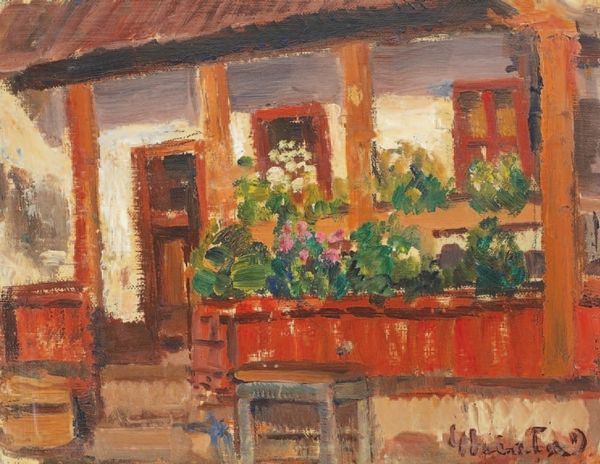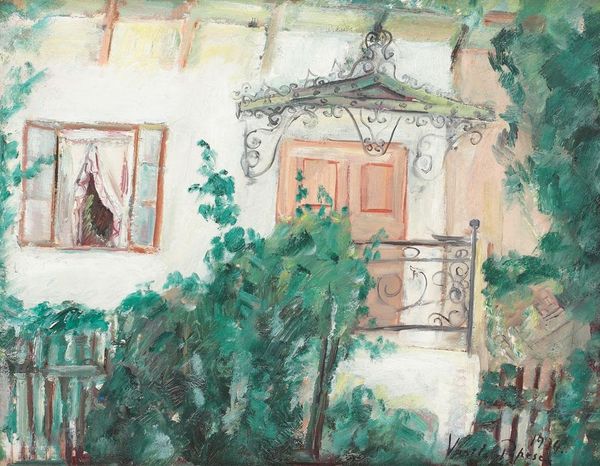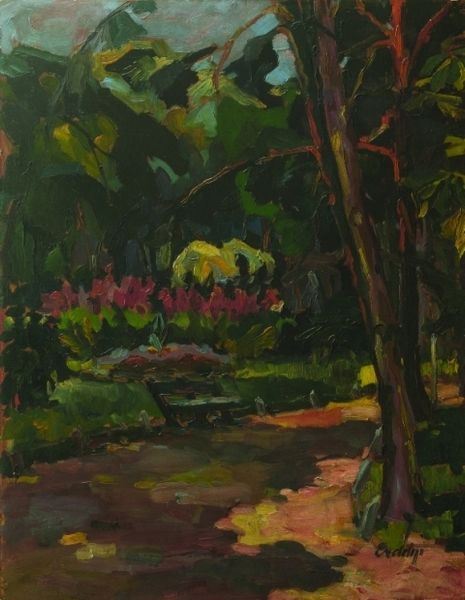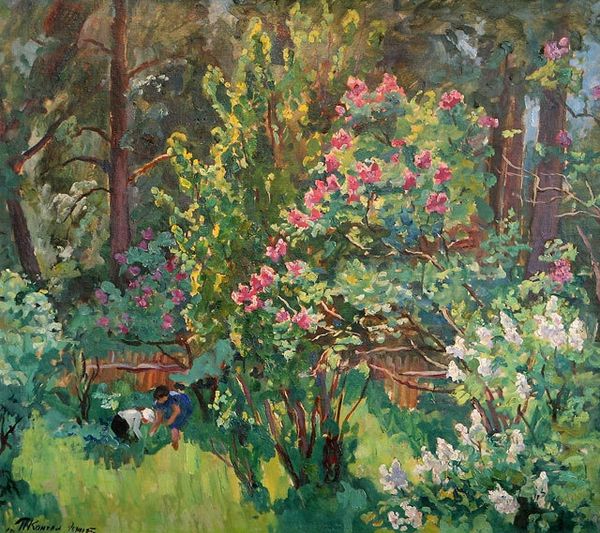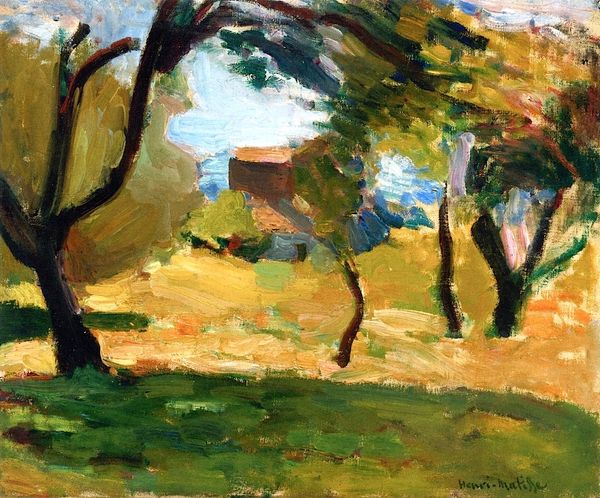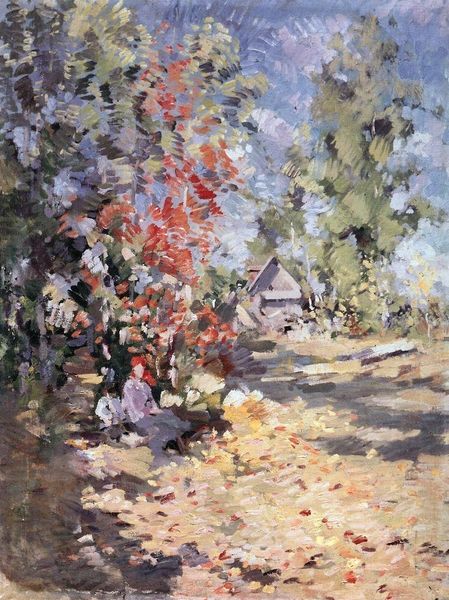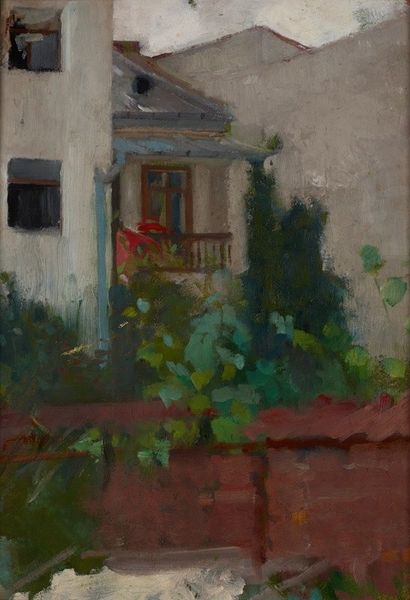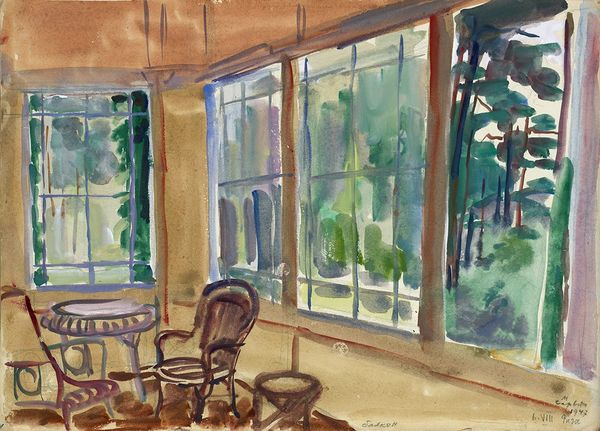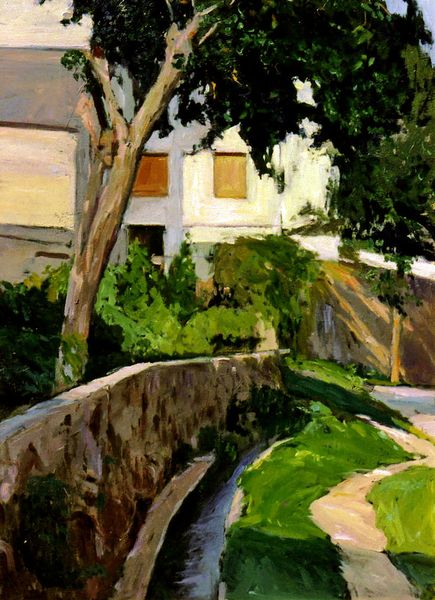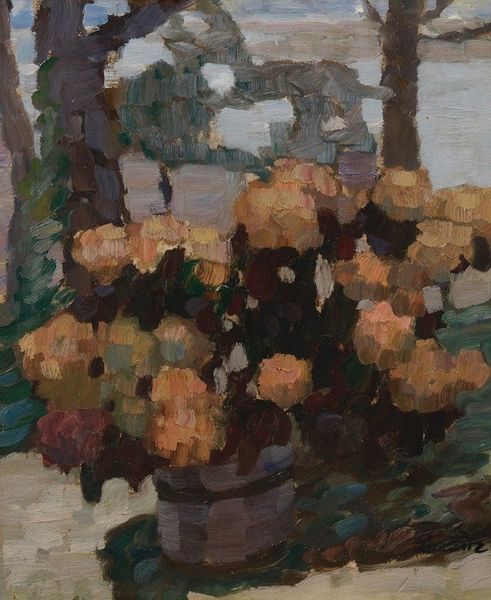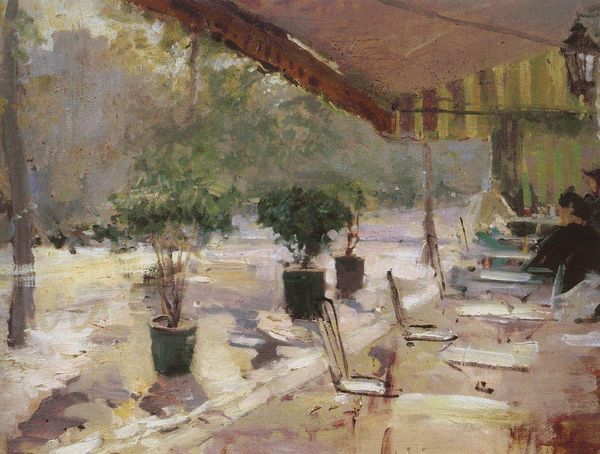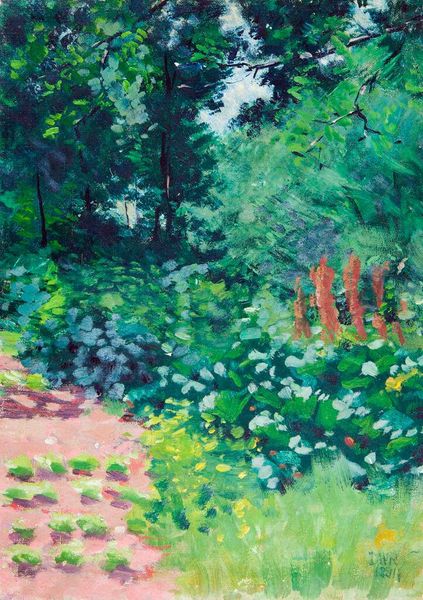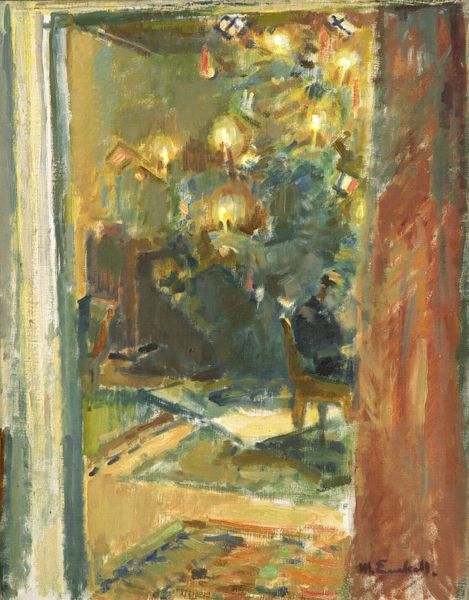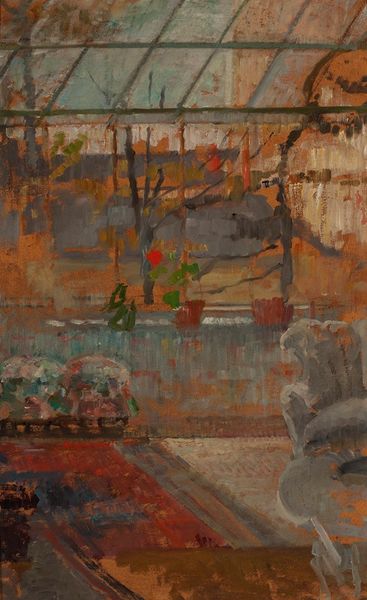
Copyright: Public Domain: Artvee
Curator: What a pleasant painting! The immediate feeling is one of quiet serenity, wouldn't you agree? The soft colors and diffuse light contribute to a sense of peaceful enclosure. Editor: This piece is entitled, "View on a farmhouse in the Netherlands," painted in 1898 by Max Liebermann. He worked "en plein air," meaning outdoors, to create this oil-on-canvas work. Curator: Yes, you can tell by the artist's bold and free brushstrokes that he probably stood right on site. Looking closer at the interplay between the visible and the obscured, I find it creates tension. The eye darts from the sharp geometry of the window and bench, to the soft edges of the foliage. The effect, dare I say, is a kind of restful dynamism. Editor: Interesting that you interpret it that way! I’m struck by how Liebermann seemingly rejects the grandiose, opting instead for an intimate portrayal of everyday life. Note that during this time, many academic painters were focusing on history or mythological scenes. Curator: Perhaps! But this is precisely what makes Liebermann's vision so impactful; he chooses not to depict grandiose scenes. The interplay of light and color creates a subjective, emotionally charged reality. Consider the interplay between the window, adorned with its flowers, and the suggestive emptiness of the bench just to the side... Editor: Agreed! And, more broadly, the art world at the turn of the century was in tumult. Impressionism challenged traditional notions of representation, but often reinforced existing socio-political frameworks. Where does Liebermann fit into that dynamic? Did his choices empower certain people and spaces while marginalizing others? Curator: Such political readings are necessary, though the simple and harmonious composition invites contemplative and less-confrontational responses. Ultimately, art’s reception evolves in discourse; Liebermann invites various viewpoints, formal or political, because of its very intimate complexity. Editor: Certainly. On balance, his rendering offers not just aesthetic pleasure but also prompts critical questions concerning history, perception, and ideology. Curator: I leave now with an appreciation for the ability of paint, color, and light to convey so much in what might seem a very quiet moment in time. Editor: Yes, the way Liebermann situates an everyday scene, inviting speculation, continues to resonate for the contemporary spectator.
Comments
No comments
Be the first to comment and join the conversation on the ultimate creative platform.
